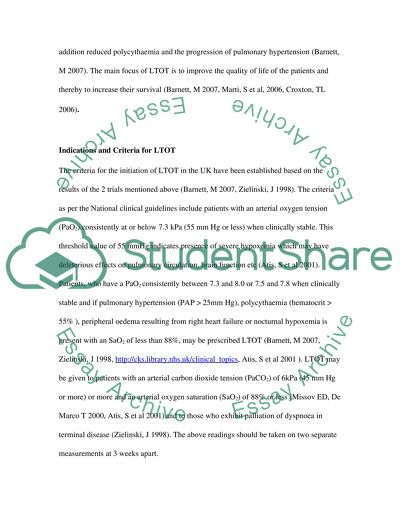Cite this document
(Long-term Oxygen Therapy Service and Prognosis Literature review, n.d.)
Long-term Oxygen Therapy Service and Prognosis Literature review. Retrieved from https://studentshare.org/medical-science/1547343-chronic-obstructive-pulmonary-disease-copd-as-set-out-below
Long-term Oxygen Therapy Service and Prognosis Literature review. Retrieved from https://studentshare.org/medical-science/1547343-chronic-obstructive-pulmonary-disease-copd-as-set-out-below
(Long-Term Oxygen Therapy Service and Prognosis Literature Review)
Long-Term Oxygen Therapy Service and Prognosis Literature Review. https://studentshare.org/medical-science/1547343-chronic-obstructive-pulmonary-disease-copd-as-set-out-below.
Long-Term Oxygen Therapy Service and Prognosis Literature Review. https://studentshare.org/medical-science/1547343-chronic-obstructive-pulmonary-disease-copd-as-set-out-below.
“Long-Term Oxygen Therapy Service and Prognosis Literature Review”. https://studentshare.org/medical-science/1547343-chronic-obstructive-pulmonary-disease-copd-as-set-out-below.


